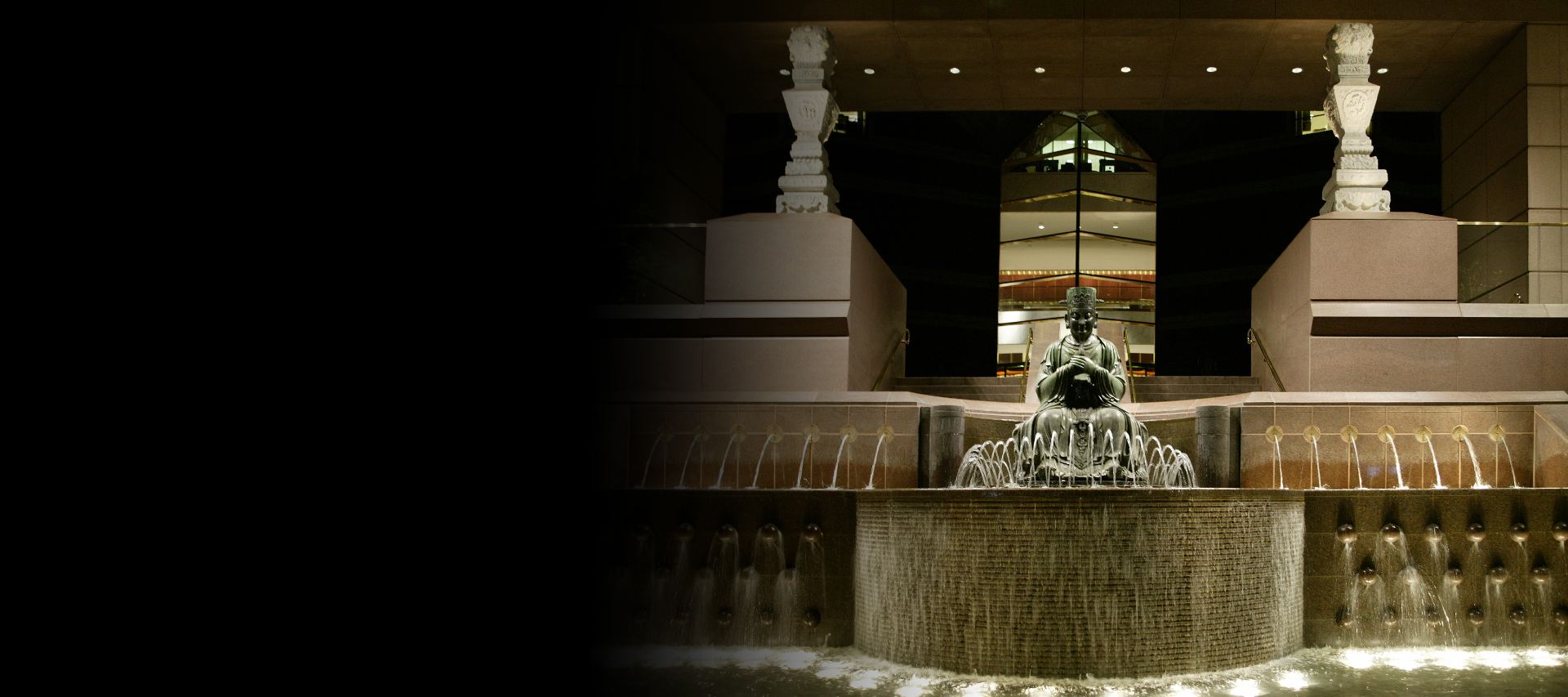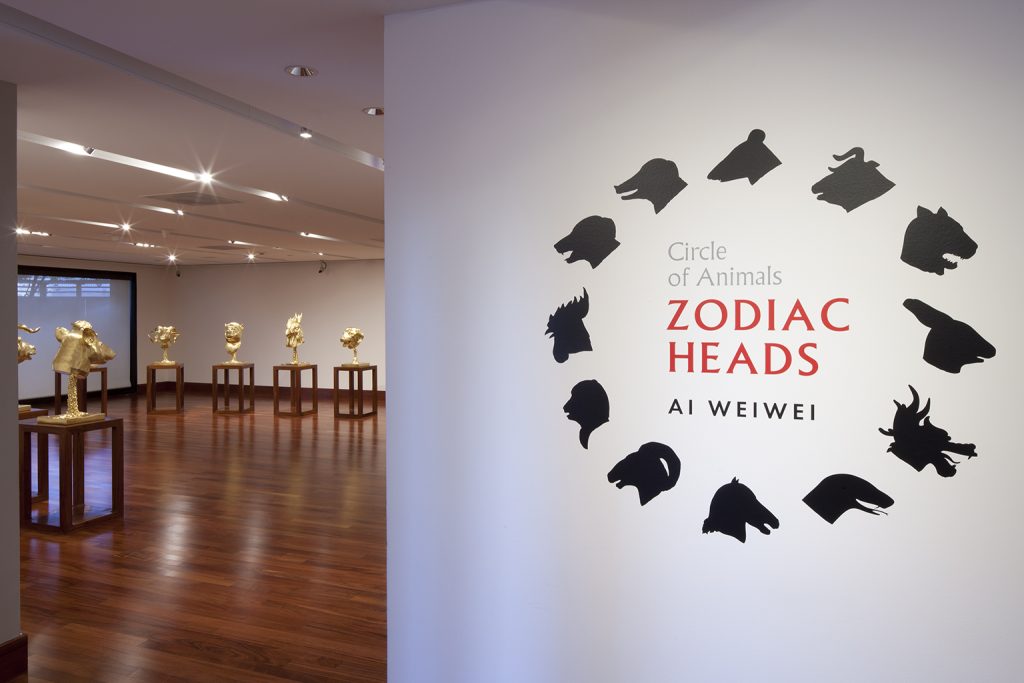
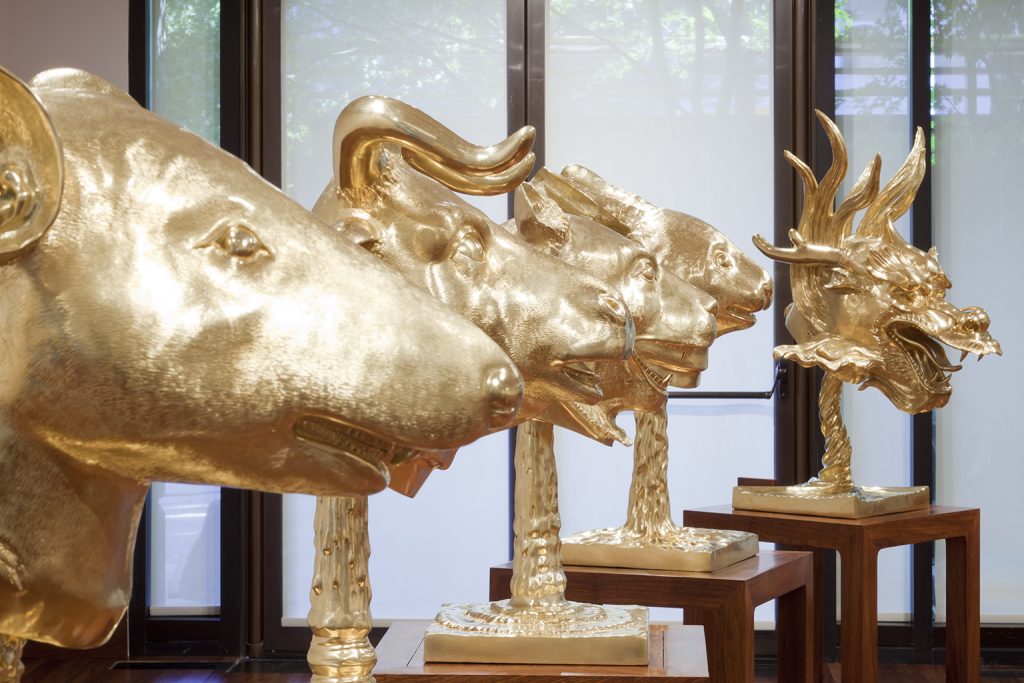
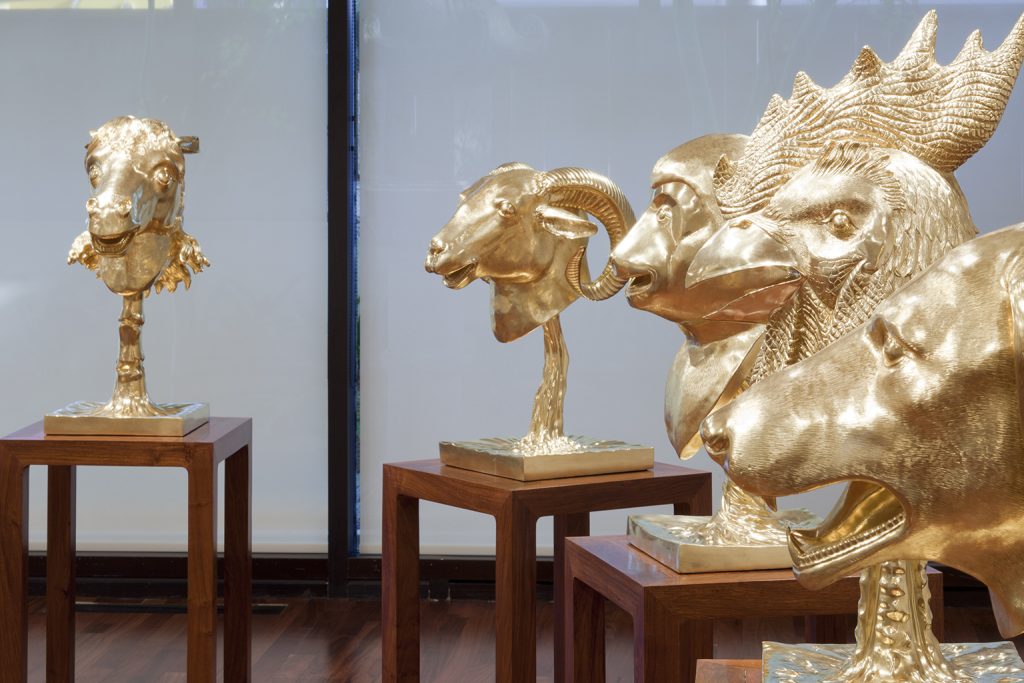

As an artist , Ai Weiwei resists classification. In his own words, “My work is always a readymade. It could be cultural, political,or social, and also it could be art—to make people re-look at what we have done, its original position, to create new possibilities. I always want people to be confused, to be shocked or realize something later. But at first it has to be appealing to people.” His series of animal-head sculptures depicting each of the twelve signs of the Chinese zodiac does all of those things. The artworks are finished in beautiful gilding, and each animal is rendered to have a distinct personality and anthropomorphic expression. In Ai’s words, “I think it’s something that everyone can have some understanding of. . . . They’re just animals.” But of course, they are not “just” animals. They are sculptures that challenge the viewer to move past the gilt surface and excavate through layers of cultural history. The form of the animal heads is taken from a complex fountain-clock designed for Yuanming Yuan, a Qing dynasty imperial retreat outside Beijing, now known as the Old Summer Palace. The fountain was designed by the Italian Jesuit Giuseppe Castiglione, an important artist in the court of the Qianlong emperor in the 18th century. Placed in a section of the gardens dedicated to “European-style” architecture and landscape, the fountain was an amalgamation of European and Chinese aesthetics, resulting in something entirely new, and something alluringly bizarre to our contemporary eyes.

The original sculptures, designed and cast by European artists for a Manchu emperor of China, speak to the Qing emperors’ interest in Western technology and science, not so much because it was revolutionary— bronze-casting technology had existed in China for millennia—but because it was foreign. Yuanming Yuan was later ransacked and burned during the second Opium War in 1860, and the ruins became an enduring national symbol of humiliating defeat at the hands of Western powers. The fountain’s animal heads were looted by British and French troops, and only seven of the original heads have been recovered and sold at auction amidst rhetoric of cultural repatriation. Ai challenges this rhetoric, pointing to the circumstances of their original creation as decorative objects made by Europeans in a foreign style at the whim of a Manchu emperor. In more recent history, Yuanming Yuan has been revisited by artists in many contexts. In the 1970s, after the end of the Cultural Revolution, the ruins of Yuanming Yuan were a popular site for artists like Ai to paint and sketch. In the 1980s, it became the site of an artists’ village where unofficial painters lived and created works that have now entered into the canon of contemporary Chinese art.
They are sculptures that challenge the viewer to move past the gilt surface and excavate through layers of cultural history.
At the heart of these works, however, is Ai’s fascination with the Duchampian “readymade,” and the relationship between the original, a copy, and a “fake.” In this case, the enduring subject of the twelve animals of the zodiac functions as the readymade just as much as the original zodiac heads. The zodiac has been at different times a component of Chinese cosmology, a symbolic decoration, or cultural kitsch—eventually becoming a weak copy of a previously powerful cultural touchstone. When asked about his own family’s zodiac signs, Ai demurred, “I’m not sure, actually, because when we grew up, nobody talked about the zodiac. . . . I think today, the Chinese people care about the zodiac for fun. It doesn’t have much impact or symbolic meaning. . . . It doesn’t have any meaning, really.” The faces of the animals, however, from the wide-eyed, smiling horse to the stern rooster, beckon viewers to linger and draw the meaning out of these zodiac heads.
